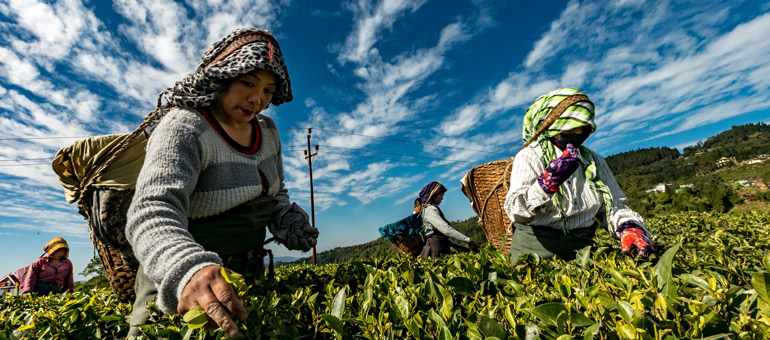An additional USD 33 billion (60% from local citizens via taxes, 40% from official development assistance and donors) per year, from now to 2030, is needed to end hunger in a way that is sustainable for both the planet and the livelihoods of small-scale producers in low- and middle income countries. That’s a large number, but the benefits could be even larger: this additional investment would prevent 490 million people from experiencing hunger, double the incomes of 545 million food producers and their families, and limit greenhouse gas emissions from agriculture to the Paris Agreement commitments - and stimulate an extra USD 52 billion in private investment, on average, per year.
That was one result from a fascinating report released recently from Ceres2030, a joint initiative of Cornell University, the International Food Policy Research Institute, and the International Institute for Sustainable Development. The project sought to enable governments to achieve the UN Sustainable Development Goal on eliminating hunger, while also improving diets, supporting livelihoods, and improving environmental sustainability. It did so in two ways: assessing what existing evidence says about agricultural interventions that work to double small-scale producers’ incomes and improve environmental outcomes and, based on those results, estimating the cost of achieving the abovementioned goals by 2030.
The first stream of work used a machine learning-assisted review of published research and data on agricultural interventions, alongside expert advice, to draw recommendations for priority interventions to make agriculture more productive, better for the environment, and more lucrative for farmers.
The results are interesting in that they present an apparent contradiction: there are a lot of impactful, evidence-based ways to sustainably improve agricultural production and livelihoods. But there are no silver bullets.
To consider first the possibilities, the research found several important ways to make agricultural markets more inclusive. Membership in a farmers’ organisation was found to be consistently correlated with higher income, as well as increased crop yields and quality and benefits for the environment. In a similar vein, programs that train rural youth in diverse practical skills help increase employment levels and wages. More broadly, social protection programmes that aim to overcome barriers to escaping poverty, such as through skills training, employment support, and access to credit, can be a bridge to better jobs and higher incomes.

The study emphasised the importance of providing extension services, particularly to women, increasing research on interventions that work in water-scarce regions, and supporting the adoption of climate-resilient crops. © Unsplash
Within the area of on-farm interventions, the study emphasised the importance of providing extension services, particularly to women, increasing research on interventions that work in water-scarce regions, and supporting the adoption of climate-resilient crops. The researchers also noted the importance of improving livestock feed (in quality and quantity), which can be a double-win for increasing productivity while reducing greenhouse gas emissions per unit produced. Finally, the report emphasised that sustainable agriculture interventions must be economically viable for farmers in order to support their adoption and long-term maintenance - that is, incentives matter.
In its final recommendations, the report highlights the importance of looking beyond the farm to the rest of the food supply chain. This includes extending interventions to reduce post-harvest loss beyond the farm, beyond cereals, and beyond the storage sector to include other parts of the value chain, other crops, and other sectors. It also includes supporting the key role of small- and medium-sized enterprises in providing farmers with essential services, which are correlated with farmers’ increased technology adoption and higher productivity.
Despite the massive amount of research uncovered and synthesised by the Ceres2030 effort, there remain some gaps, such as those related to gender and environmental issues and to ultimate impacts on indicators such as hunger; fisheries and aquatic resources are also not covered. And when it comes to the even knottier challenge of not just ending hunger but improving nutrition (which was not part of Ceres2030’s mandate), robust interventions to improve the supply side of the food system equation are only half of the puzzle. They will fall short if not accompanied by demand-side efforts to increase access to safe, sustainable, and nutritious foods and steer consumers to choose them over less healthy, and less sustainable, alternatives.
Based on the high-impact interventions they were able to identify, however, the researchers modelled 14 relevant policy instruments (food subsidies, vocational training, investment subsidies, fertilizer subsidies, capital endowments, production subsidies, national R&D, international R&D, extension services, irrigation infrastructure, agroforestry, improved forage, storage, and roads) to come up with the headline cost numbers cited above. While initially daunting, those numbers can also be seen as empowering: they make it clear that accomplishing goals that are central to sustainable development is, indeed, a very good value investment. The Ceres2030 report also offers a set of high-impact ways to target those investments, and these will be important ideas to consider in the run-up to the UN Food Systems Summit of 2021, a once-in-a-generation chance to achieve commitments to ‘game changing and systemic’ solutions to transform food systems to better meet societal goals.
So, given this potential, why are there no silver bullets? One of the study’s headline results is that, across all types of agricultural interventions, they are "more effective with a population that enjoys at least a minimum level of income [and] education, with access to networks and resources such as extension services and robust infrastructure…. this minimum threshold matters." As we move towards the Food Systems Summit, this is a sobering reminder that the work needed to transform food systems does not end where the food system does. Without the basic foundations for sustainable development in place, such as reduced poverty and improved education, even well-targeted, evidence-based food system interventions can only go so far. This should not prevent us from moving forward on progress to achieve zero hunger – but should motivate our continued collaboration with other sectors and movements to ensure we advance jointly on the entire 2030 Agenda.